Iran Announces $700m Persian Gulf Bridge Project Funded By Oil Barter
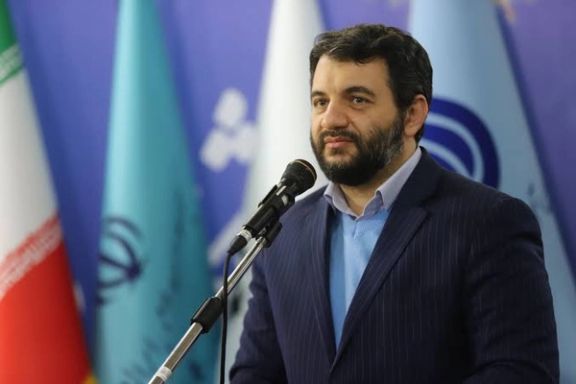
Oil revenues will fund a $700m Persian Gulf Bridge project in the south of Iran connecting the Qeshm Free Zone to the mainland, claims Tehran.

Oil revenues will fund a $700m Persian Gulf Bridge project in the south of Iran connecting the Qeshm Free Zone to the mainland, claims Tehran.
The Secretary of the Supreme Council of Free Zones in Iran, Hojjat Abdolmaleki said: "We have also had negotiations with Chinese contractors, and it is planned for the project to be among the finance and credit line projects of Iran and China."
His comments come as Iran is offering substantial price reductions to its principal oil buyer, China, which also barters goods and services with Iran in exchange for oil amidst global sanctions.
"The President has ordered the allocation of resources from the general budget and from oil barter, and we are striving to put the project into operation within the next three years," he added.
"Approximately $700 million is needed for the entire project, including the completion of railways and highways, but its benefits for the country are very high."
Just last week, Iran announced a $20-billion high-speed train network which it said is to be funded through the National Development Fund and oil barter agreements amid the country's worst ever economic crisis.
In 2021, Tehran and Beijing signed a controversial 25-year co-operation deal which was first proposed by Iran's Supreme Leader Ali Khamenei during President Xi’s visit to Tehran in 2016.
Its details have never been disclosed and a leaked copy of the final text only outlines the general terms of the agreement. Tehran officials, beleaguered by an economic crisis they cannot solve, hoped it would bring billions in investment and make Iran part of China' Belt and Road Initiative, a multi-trillion-dollar infrastructure scheme intended to stretch from East Asia to Europe.

Iran's Foreign Minister has met with leaders of multiple Iran-backed Palestinian militant factions based in Damascus as the war in Gaza continues to fuel a proxy war around the region.
Iran's proxies in Syria, Iraq, Lebanon and Yemen have joined Hamas's war on Israel and US targets in the region since October 7 when Gaza-based Hamas invaded Israel.
"Today, the issue of Palestine has become the world's top issue, and October 7 and the Al-Aqsa Intifada showed that Palestine is alive and will not surrender to the demands of the Zionist regime and the coercive powers, including the United States government," Hossein Amir-Abdollahian stated during the meeting. It is believed that at least 15 members of factions such as Hamas and Palestinian Islamic Jihad were in attendance.
During the regional tour, the Iranian Foreign Minister also met Syrian President Bashar al-Assad in Damascus on Sunday and senior Lebanese government officials and leaders of Palestinian groups in Beirut on Saturday.
Iran continues to deny its hand in the atrocities of October 7 in which 1,200 mostly civilians were murdered by Hamas and another 250 or more taken hostage to Gaza. However, Tehran continues its very public, high level engagement with Palestinian militant groups which it has for years funded, armed and trained.
Israel has since intensified its airstrikes on Iranian-backed military targets in Syria and Iranian military personnel since the war broke out, with high-level killings gaining pace.
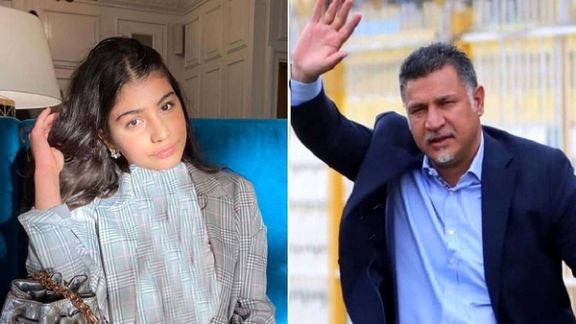
Iran’s hardliners are incensed by the failure to prosecute Ali Daei's teenage daughter for appearing without a hijab on an online football show where she surprised her father for his birthday.
In a scathing critique published on Friday, Raja News, a website associated with the ultra-hardliner Paydari Party, expressed public outrage, questioning whether ordinary individuals would have faced legal repercussions for similar actions. The absence of judicial action against Noura Daei, the footballer's teenage daughter, was labeled as "judicial discrimination" by Raja News, warning of its potentially detrimental impact on public morality and religious devotion—a sentiment echoed by hardliners across social media platforms.
The incident occurred during an episode of the internet show "Football 360," hosted by Adel Ferdosipour, where the thirteen-year-old daughter of the former German Bundesliga striker made a surprise appearance to celebrate her father's birthday.
Ali Daei’s daughter Noura entering the studio to surprise her father.
Noura Daei entered the studio dressed simply in a black hoodie, sweatpants and trainers, but despite Iran's mandatory hijab rules, which requires girls to cover their hair from the age of nine, her dark hair was cascading on her shoulders.
Noura Daei hugged her father and when she became emotional, Ferdosipour, his father’s old friend, caressed her head for a second. This, too, has angered hardliners who have also criticized him for touching a girl he is not related to by blood, and Daei, for allowing him to do so.
“Last week, scorning the law and Sharia, Adel Ferdosipour sat Ali Daei’s daughter with uncovered head in his program. None of the authorities dared to prosecute them for this. Is the prosecutor, as the public’s representative, in winter hibernation?” a hardliner tweeted.
Daei and Ferdosipour have made no comments about hardliners’ criticisms and their demand for the punishment of Daei’s young daughter for not wearing the hijab.
Many social media users, however, have defended them and pointed out that the same hardliners have been silent about women not wearing the hijab in the state-sponsored February 11 anniversary of the Islamic Revolution march or the recent visit of a pro-Palestinian American adult movie actress Whitney Wright to Iran.
A woman with uncovered hair at state-sponsored anniversary of Revolution march.
“They see the hair of Ali Daei’s 13-year-old daughter and protest that it is defiance of hijab. But they even encourage it when a 40-year-old woman shows her hair [in the march] because it is propaganda for the regime,” one of the tweets on the subject said.
Daei, a former soccer star and captain of the national team, has garnered even greater popularity among Iranians for his vocal support of anti-government protesters. With 12.4 million followers on his Instagram page, he has refrained from commenting on the hardliners' attacks against him and their demand for his daughter's punishment.
Both Daei and Ferdosipour, a renowned soccer commentator, are considered "undesirables" by the regime due to their outspoken support for Iranian protesters on numerous occasions, resulting in their exclusion from official events and programs in recent years.
“What have you done to this country? My daughter is asking me what has happened [to Mahsa Amini]. What can I tell her? For what sin [was she killed?” he wrote on Instagram on September 16, 2022, when the 22-year-old Mahsa Amini died in hospital after a head injury she sustained in the custody of morality police.
Daei's philanthropic efforts faced government interference in 2017 when he and fellow footballer Karim Bagheri attempted to raise funds to aid the earthquake-stricken people of Kermanshah. Authorities froze their accounts, obstructing their charity drives.
The pressure on Daei and his family escalated further after his Instagram post during the Woman, Life, Freedom protest. In December 2022, security forces diverted a Dubai-bound Mahan Airlines plane to Kish Island to prevent Daei's wife and daughter from leaving the country. Furthermore, in early December of the same year, security forces sealed two of his businesses, a jewelry shop, and his restaurant, following his participation in a day of strikes called by protesters.
Ferdosipour, known for his immensely popular show "90" aired weekly on the state broadcaster IRIB, was banned from all IRIB sports programs in 2018. With an audience sometimes surpassing 30 million, he was once listed among Iran's top 20 most influential figures by Newsweek magazine in 2009.
In early 2022, Ferdosipour launched "Football 360," a weekly YouTube talk show also available as a podcast and mobile application. With over a million installations by Iranians on their phones, the show has gained significant traction.
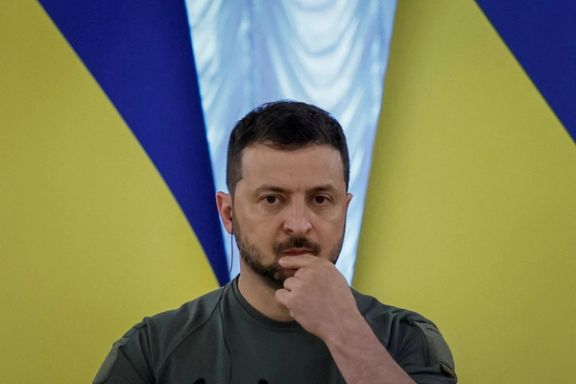
The Ukrainian President announced that the country's air defense has intercepted and downed 359 Iranian Shahed kamikaze drones since the start of 2024.
Since September 2022, Russia has been employing Iranian-designed Shahed-type loitering munitions to carry out attacks on Ukrainian cities, resulting in frequent civilian casualties.
“The accuracy of our air defense, the work of the electronic warfare systems, and the support from each of our partners in terms of the sky shield literally save lives,” Volodymyr Zelensky said on Sunday.
Zelensky further stated that Ukraine is actively working to enhance the efficiency of mobile firing groups and to deploy more electronic warfare systems across various regions of the country. “This is one of the key priorities of the year,” said Zelensky.
On Sunday morning, the Ukrainian Air Force reported that Russia launched an attack on Ukraine using 45 drones from occupied Crimea.
Since the beginning of the full-scale invasion, the Russian military has been utilizing occupied territories such as Crimea as launch sites for missiles and other weapons targeting Ukraine.
The United States, United Kingdom, European Union, Australia, and New Zealand have collectively implemented multiple rounds of sanctions against the Islamic Republic due to its provision of drones to Russia. Iran continues to deny the allegations.

Four journalists from the Fardaye Eghtesad media outlet have been missing since February 5 amid tightening crackdowns on dissent under a weakening regime.
The US-based Human Rights Activists News Agency (HRANA) revealed on Sunday that three video-journalists, Mehrdad Asgari, Nikan Khabazi, Ali Tasnimi and the deputy editor-in-chief of the liberal-leaning newspaper, Behzad Bahmannejad, were taken to an unknown location on Friday after being detained in the editorial office for four days.
Maryam Shokrani, an economic reporter, said the journalists have had no communication with their families, raising concerns about their whereabouts.
On Monday afternoon, approximately 30 journalists were arbitrarily detained at the offices by security forces without any explanation. Some managed to inform their families that their mobile phones and computers were confiscated during the detention.
Although some were released from the office on Tuesday morning, five others remained.
The judiciary claims the raid was unrelated to journalistic activities and that separate allegations were under investigation.
The International Federation of Journalists reported in July that following the killing of Mahsa Amini, at least 100 journalists in Iran have been detained, with more than 21 of them sentenced to a combined total of 77 years in prison.

Iran asserts that its space program is geared towards fostering scientific advancement, yet it undeniably bolsters its regional influence, and could enhance its hard power capabilities.
Space is viewed as the paramount strategic vantage point, stemming from Iran's missile program, whose advancement holds significant geopolitical implications. The inclusion of military satellites in the space program, overseen by the IRGC, underscores Iran's fusion of civilian and military initiatives in space endeavors, mirroring its broader strategic objectives.
Iran uses the Safir and Simorgh launchers and intends to improve its satellite and rocket technology. The funding of the space agency has increased, and extra technical help is provided through partnerships with nations like North Korea, China, and Russia.
Though the Iranian Space Agency is a division of the Ministry of Communication and Information Technology, the Iranian Ministry of Defense, especially through the IRGC, has significant control over the space program. The importance of the program to Iran's military, security, and economic interests is highlighted by this dual supervision.
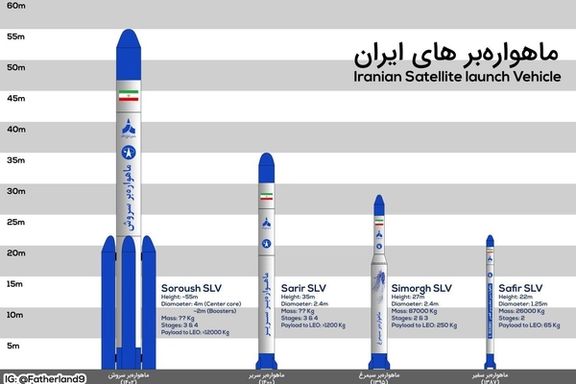
A noteworthy achievement is the building of the Chabahar Space Center in southeast Iran, which is slated to grow to be the biggest space launch location in West Asia. Its completion sometime in the next decade would further solidify Iran's position as a major actor in regional space operations and is anticipated to improve Iran's space capabilities and promote international collaboration.
Iran's space program is poised for a significant advancement with the establishment of the Chabahar Space Center, strategically located in a southern-most region. This center's proximity to the equator offers a key advantage, providing more speed by harnessing the Earth's rotational speed, which enhances spacecraft lift-off and reduces fuel consumption. Designed to propel Iran's space aspirations, the facility aims to deploy satellites into both geosynchronous and low Earth orbits (LEO). Equipped with cutting-edge launch platforms, processing complexes, and assembly facilities, the Chabahar Space Center represents Iran's ambitious endeavor to overcome geographical limitations and bolster its space capabilities. Expected to surpass existing facilities like the Imam Khomeini Space Center, this new center marks a significant leap forward in Iran's space infrastructure.
Iran ten-year space program
The Iranian Space Agency began its massive ten-year space program in January 2023 with the goal of making Iran a space technology development and launch services leader in the coming years. The program highlights Iran's will to support its space industry by building launch pads, developing satellite infrastructure, and conducting research missions.
With its expansive 14,000 hectares, the Chabahar Space Center is ideally positioned to become the focal point of Iran's space activities. Its advantageous position and special qualities allow for the launching of several kinds of satellites, including as sun-synchronous and low-orbit satellites. The facility is expected to play a crucial role in furthering Iran's aspirations in space research and technology, enhancing its standing in the international space community, and bolstering its standing in the region as the main launch location for future missions.

The international community and Iran’s space program
Concerns over Iran's space program have been raised by Western countries, especially by the US and European powers. The program's possible dual-use character, which links it to the advancement of long-range missile technology, worries the United States. Similarly, believing that Iran's space launch vehicles (SLVs) could serve as intercontinental ballistic missiles (ICBMs), the EU has voiced concerns about these vehicles. Concerns over Iran's ambitions in space research, nuclear energy, and missile technology also surround its space program agreements with China and Russia.
The United States and its allies have accused Iran of using satellite activities as a cover for its intercontinental ballistic missile program, so endangering the Middle East and Europe, in violation of UN Security Council Resolution 2231. Nonetheless, Iran insists that the missiles it has built are not for carrying nuclear warheads and in line with Resolution 2231, which formalized the 2015 JCPOA nuclear agreement.
Challenges
Iran's space program faces a wide range of technical, geopolitical, and economic challenges.
Dual-Use Nature: There have been questions over the Iranian space program's possible dual-use nature due to the similarities in technology between intercontinental ballistic missiles and satellite launchers. Technological developments in satellite launchers can also be advantageous for the development of ICBMs, resulting in tensions and international attention.
International Concerns: Iran's space program has sparked worries abroad, especially considering the possible military uses of its scientific developments. These worries have been exacerbated by the deployment of military satellites and the advancement of rockets manufactured domestically.
Technological Restrictions: Iran's space program has made progress, although there are still technological limitations. There have been unsuccessful efforts to launch satellites, demonstrating that there are still difficulties in developing dependable and regular space launch capabilities. To address worries about proliferation, the international community has slapped sanctions on organizations connected to Iran's space program. Iran also faces serious financial difficulties as US oil export and banking sanctions reduce its main source of income from crude exports.
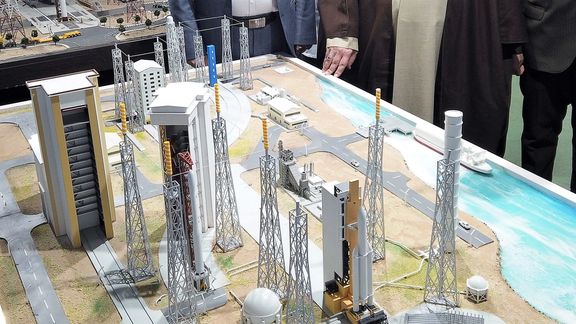
Conclusion
Iran's space program may evolve significantly with the Chabahar Space Center, mainly because of its advantageous location and planned state-of-the-art facilities. Because of its closeness to the equator, it can launch satellites more effectively, using less fuel and improving overall performance. This benefit, together with more advanced facilities than the Imam Khomeini Space Center, will enhance the center's significance in furthering Iran's space goals.
Iran's determination to launch satellites from its territory, demonstrated by the establishment of the Chabahar space port, is met with regional and international opposition due to possible dual-use technology and Western uneasiness with Iran's alliances with China and Russia. Iran claims to be conducting a purely scientific program, but questions regarding potential military uses of the program remain, which might affect how the space program develops in the future.